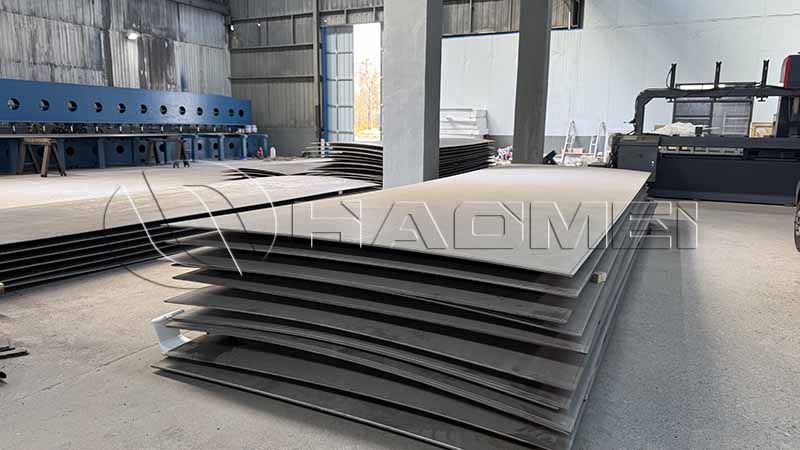Aluminium Steel Clad Sheet and Transition Joints
Aluminum and aluminum alloys, with their excellent lightweight properties, good corrosion resistance, and thermal conductivity, have become ideal choices for reducing ship weight and fuel consumption; while steel, with its high strength and rigidity, occupies an irreplaceable position in the main structure of ships. How can these two complementary materials work seamlessly together? Aluminum-steel composite plates and aluminum-steel transition joints provide the perfect answer. They not only solve the technical challenges of connecting aluminum and steel but also become key supports for improving the overall performance of ships.

Aluminum clad steel sheet
The aluminum steel clad plate is not simply aluminum and steel stacked together, but a new type of composite material that achieves atomic-level bonding between aluminum and steel layers through advanced processes such as explosive bonding and hot rolling. This "you in me, me in you" structure retains the advantages of steel in load-bearing and impact resistance while continuing the characteristics of aluminum in weight reduction and corrosion resistance, perfectly meeting the complex needs of different parts of the ship.
The application of aluminum-steel composite plates is particularly effective in the field of ship superstructure. If the traditional superstructure were entirely made of steel, it would significantly increase the ship's weight, leading to a deeper draft and increased fuel consumption; if only aluminum were used, it would be difficult to meet the structural strength requirements. Aluminum-steel composite panels offer the best of both worlds: the outer aluminum layer effectively resists corrosion from the marine atmosphere and salt spray, reducing later maintenance costs; the inner steel layer provides stable structural support for the superstructure, ensuring safety in harsh environments such as wind and waves.
Aluminum-steel composite panels also excel in shipboard liquid tanks and piping systems. For tanks carrying fuel oil, lubricating oil, and other media, the aluminum layer of the composite panel isolates the media from direct contact with the steel, preventing corrosion and contamination.
In seawater cooling pipelines, aluminum-steel composite panels are resistant to seawater corrosion and can withstand certain pressure impacts. Compared to traditional pure aluminum pipes or plastic-lined steel pipes, their service life is extended by 3-5 times, while reducing the risk of pipeline leaks.
Transition Joints
The physical and chemical properties of aluminum and steel differ significantly—aluminum has a low electrode potential, while steel has a high electrode potential. Direct connection easily forms a galvanic cell, leading to electrochemical corrosion. Furthermore, their coefficients of thermal expansion and melting points differ significantly, making welding prone to defects such as cracks and porosity.
Aluminum steel transition joints were developed to solve this "connection problem." Through special material design and manufacturing processes, they create a stable transition zone between aluminum and steel, achieving a reliable connection between the two materials.
Currently, the aluminum-steel transition joints commonly used in ships are either explosive welding or friction welding joints. Their core principle is to mitigate the performance differences between aluminum and steel through an intermediate transition layer (such as titanium or zinc alloy).
Taking explosive welding transition joints as an example, they utilize the high-pressure shock wave generated by an explosion to achieve metallurgical bonding of the aluminum, transition layer, and steel materials under extreme pressure. The joint strength can reach over 90% of the base material strength and possesses excellent corrosion resistance and fatigue resistance.
In marine propulsion systems, transition joints play a crucial role. The bases of the main engine and generators are mostly steel structures, while the piping of the cooling and fuel systems is mostly aluminum. Transition joints are the "key link" connecting the two. Without transition joints, direct welding of aluminum and steel pipes is not only prone to corrosion and leakage but may also lead to joint breakage due to vibration and thermal expansion and contraction, causing propulsion failures.
Using transition joints not only ensures the sealing and stability of the piping system but also reduces vibration transmission and improves the operational reliability of the power system. Furthermore, transition joints play an irreplaceable role at the connection between the aluminum superstructure and the steel hull of a ship, effectively mitigating the deformation differences between the two under temperature changes and external forces, and preventing stress concentration at the structural connection.









